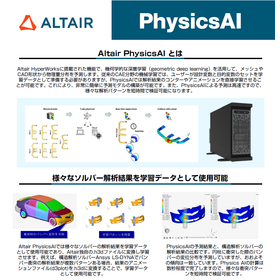Using the software "PHOTO-WAVEjω"! Analyzing the scattered waves after hitting a sphere using the finite element method.
We present a case where the scattered wave in the far field, when a plane wave is incident on a scattering body and scattered, is estimated using the finite element method. A plane wave polarized in the X-axis direction is incident in the Z-axis direction, and the scattered wave after it hits the sphere is analyzed using the finite element method. Next, based on those results, we estimate the scattered wave in the far field using two different methods and compare the results. The shape is modeled in full. [Software Used] ■PHOTO-WAVEjω *For more details, please refer to the related links or feel free to contact us.
Inquire About This Product
basic information
【Analysis Conditions】 ■ Analysis Model - A dielectric sphere (radius: a) is surrounded by air (radius: R). - An "impedance boundary" is set at the outer perimeter of the air layer, applying a "non-reflective boundary condition." ■ Incident Plane Wave - Magnitude: X-axis direction (real part) 1[V/m] (imaginary part) 0[V/m] - Propagation direction: Z-axis direction - Frequency: 20[GHz] Wavelength λ = 1.5×10^−2[m] ■ Dielectric Sphere - Relative permittivity: 1.56 - Radius of the dielectric sphere (a) and radius of the air layer (R): 3 types ■ Observation Point for Scattered Waves in the Far Field: Circle with a radius of 1.0[m] ■ Method for Estimating the Far Field: Method using external field calculations, method using multipole expansion *For more details, please refer to the related links or feel free to contact us.
Price range
Delivery Time
Applications/Examples of results
For more details, please refer to the related links or feel free to contact us.
Company information
At Photon, we are developing "electromagnetic field analysis software" that models and simulates products and components utilizing electromagnetic phenomena on a computer. In traditional design and development environments, the process has primarily revolved around trial and error through prototyping based on the experience of engineers and experiments with prototypes. However, conducting experiments using actual prototypes and analyzing the results requires significant time and cost. Moving forward, transitioning from an experimental and prototyping-based approach to an analysis-based design approach will be a crucial challenge for improving productivity, and establishing simulation technology as the core of analysis-based design techniques will be essential. In this context, Photon is developing and providing "analysis software" focusing on electromagnetic fields, as well as heat, vibration, and sound fields. By utilizing Photon's software, efficient development and design of various industrial products can be achieved. In this way, Photon aims to support users in reducing the number of prototypes, lowering development costs, and shortening development periods in their manufacturing environments, ultimately enhancing their competitiveness.



![[Analysis Case] Cogging Torque Analysis of Claw Pole Motors](https://image.mono.ipros.com/public/product/image/ac0/2000060405/IPROS61873611324992112476.gif?w=280&h=280)

![[Analysis Case] Analysis of PTC Resin Heater](https://image.mono.ipros.com/public/product/image/737/2000060419/IPROS90029776198144513280.gif?w=280&h=280)





![SOLIDWORKS 2026 New Features Seminar [Free Participation]](https://image.mono.ipros.com/public/default/object/noimage_l.gif?w=280&h=280)